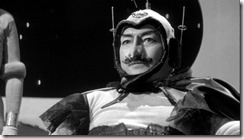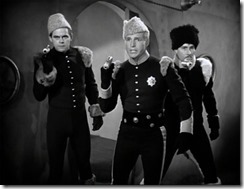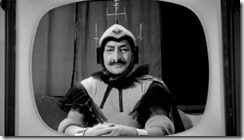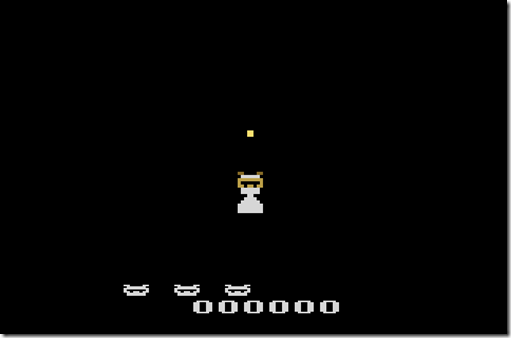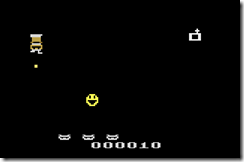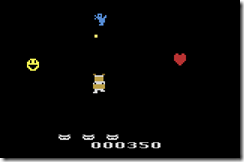This article originally appeared on the late, lamented Science Fantasy Universe blog in 2010.
Congratulations! Your ships are fueled and armed, your minions are prepared, and your course has been laid in. You’re now ready to complete your conquest of the galaxy and establish yourself as Galactic Dictator. However, before you set out to lay waste to that insignificant blue planet that always seems to be pivotal to building your space empire, there are a few things you should know. That’s why we’ve compiled this pamphlet, to make your journey of pillage, destruction, and conquest as pleasurable as possible.
Galactic regulation #ZX-765-1/P specifically requires the Supreme Ruler of the Galaxy to wear facial hair. Since the destruction of Earth is expected to take no time at all, it is best to start work on your facial grooming now. While recent changes in the law mean that a full “beard-of-evil” is no longer required, at the very least a mustache is de rigueur. If your facial hair is complete before you arrive at Earth, then there is less of a chance that red tape and paperwork will delay your coronation. (See also galactic regulation #ZA-847-5/E, “The Supreme Ruler of the Galaxy must wear a funny hat at all times.”)
Tip #2: Watch your language.
No matter what your native tongue may be, or whether or not your species is capable of verbal communication, the common language of the galaxy (as of this writing) is English. All communications, even between yourself and your home planet, are required to be conducted in English. Failure to comply with this regulation may delay your coronation. True, your native language and the structure of your vocal chords may lead you to have a ridiculous sounding accent, but don’t be self conscious about it. (Please note that there is an exception allowed if you plan to locate your base of operations on one of the islands of Japan, but only under those circumstances.)
Your henchmen may be the people that you trust the most, and have served you loyally for hundreds of space years, but they’re no replacement for having boots on the ground. Earthlings are greedy by nature, but paradoxically work cheap. Recruit a few in the early, covert, stages of your operation to help lay the groundwork. If you promise an Earthling dominion over his fellow humans, he will prove to be more loyal than your pet hovark, a harder worker than any of the slaves running your Ice Caves on Uranus, and can double as your eyes and ears as you gather intelligence. When your plans are sufficiently advanced, feel free to dispose of them as you see fit since you will have dominion over the entire race shortly, and need not be bothered with piddling little things like the lives of the people you’ve exploited. (See also Chapter 4, “Mwa-ha-ha!”)
 Tip #4: Surround yourself with the babes.
Tip #4: Surround yourself with the babes.
There are many perks to being a galactic despot, but by far the best has to be the fact that chicks are drawn to you like a space magnet. Take advantage of this fact and make sure you always have plenty of feminine pulchritude at your disposal. Sure, they may prove to be an obstacle if some meddling hero seduces one into betraying you, but there’s always plenty more fish in the sea. (However, be aware of galactic regulation #ZX-555-9/W, the “too dangerous for a girl” clause.)
Regulations require that planets about to be conquered be fully informed of their fate in advance. This is to give them fair opportunity to prepare themselves for their upcoming enslavement or destruction, whichever your plans require. It may seem like gloating when you tell them that they are all about to die, but don’t look at it that way. Think of it as helping them. Likewise, if one of them should infiltrate your ship, make sure that you tell them all of the details of your plan down to the minutiae. Then make sure that they have plenty of time to come fully to terms with what you are about to do by selecting a slow and convoluted method of execution. An Earthling who dies with full understanding is a happy Earthling. Well, a happy dead Earthling, but happy nonetheless. Do not worry that their knowledge might hinder your plans. Nothing can stop you now.
Tip #6: Have fun!
This is a joyous moment. You are about to become the undisputed Galactic Dictator, and consolidate a rule that spans the cosmos. Smile as you go about your conquest. Laugh. Enjoy yourself, because after the conquest is done, it’s nothing but work.
You will find these six tips invaluable to you as you begin this final stage of your great plan. Take them to heart as you fire your atomic piles and engage your hypersonic engines, and we’re certain that you’ll find a lot to enjoy as you subjugate Earth. Good luck.
Leave a Comment